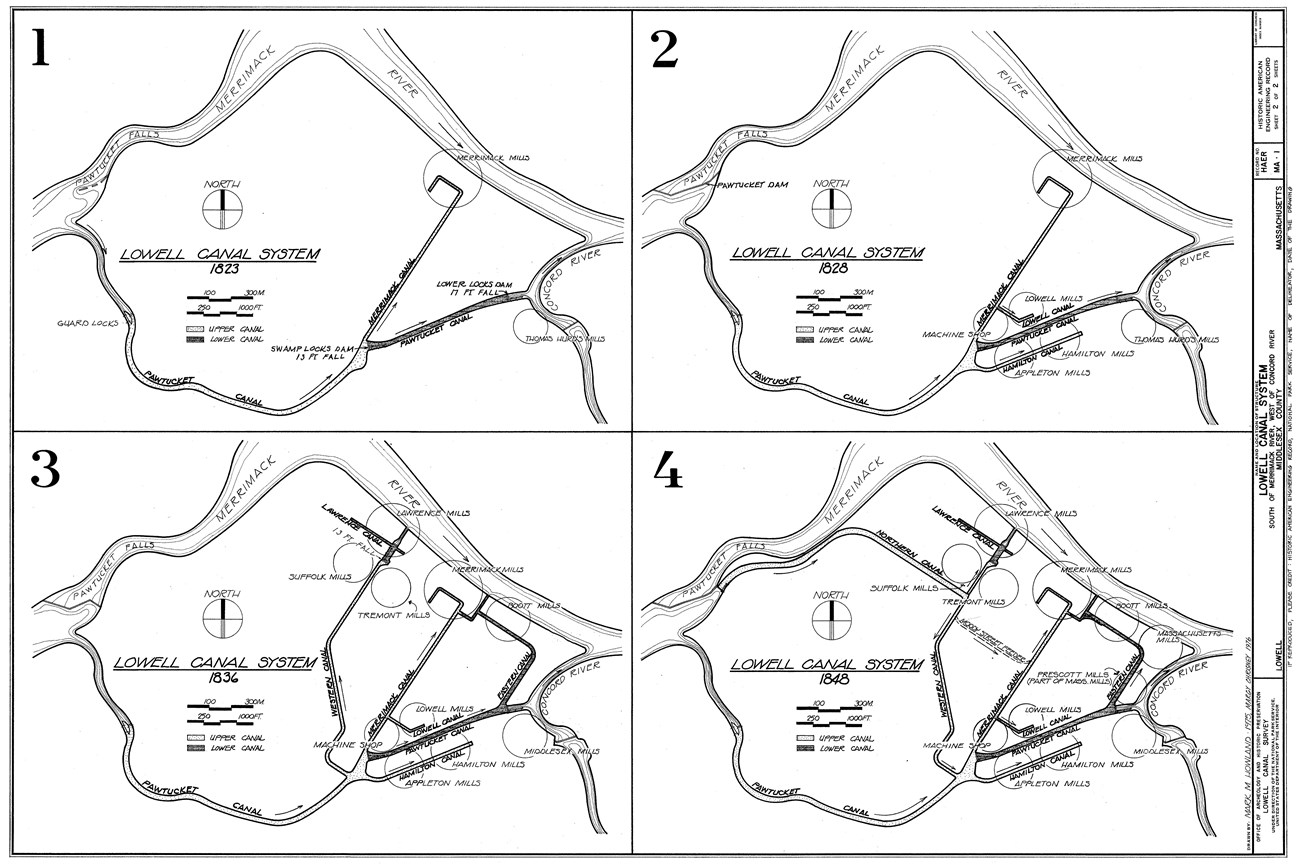Part of a series of articles titled Lowell, Story of an Industrial City.
Article
Lowell, Story of an Industrial City: Lowell's Canal System

Drawing by Mark M. Howland and Margy Chrisney, Historic American Engineering Record. From the collections of the Library of Congress, Public Domain (http://www.loc.gov/pictures/item/ma0543.sheet.00002a/)
In 1847 the construction of the Northern Canal increased waterpower generation by the canal system by 50 percent. By mid-century the canal system we see in Lowell today was in place. Including almost 6 miles of canals and operating on two levels, this system powered 10 major mill complexes employing more than 10,000 workers.
---
From: Dublin, Thomas. 1992. Lowell: the story of an industrial city: a guide to Lowell National Historical Park and Lowell Heritage State Park, Lowell, Massachusetts. Washington, D.C.: Division of Publications, National Park Service, U.S. Department of the Interior.
Last updated: June 15, 2018
